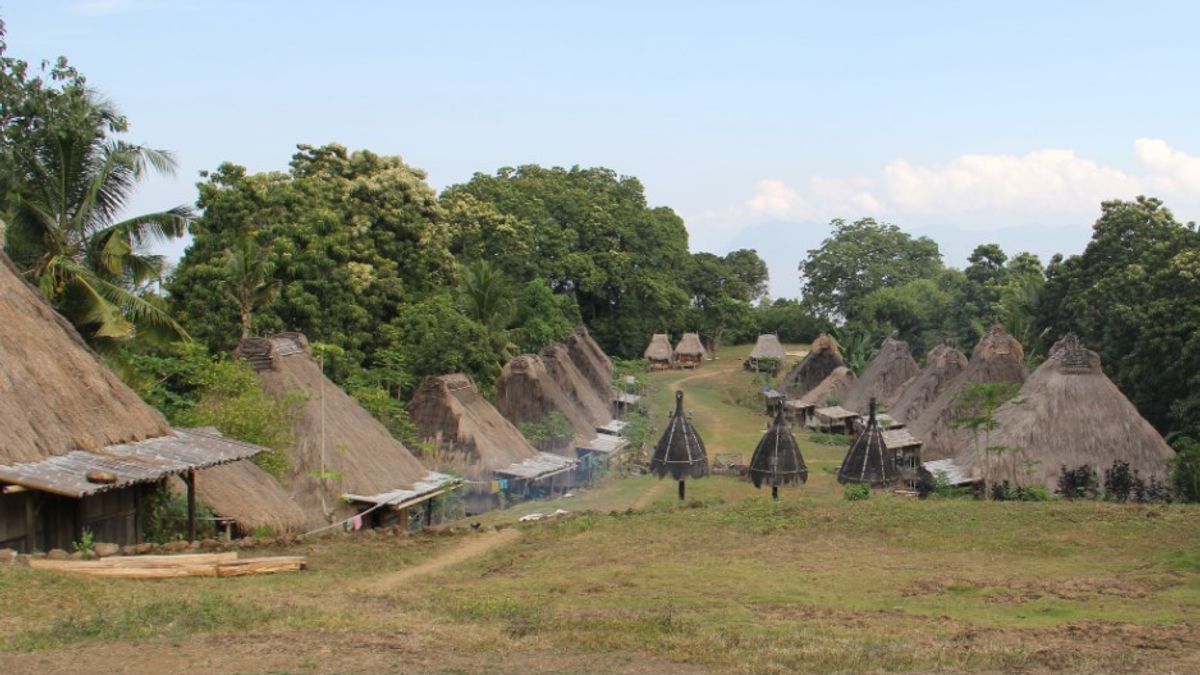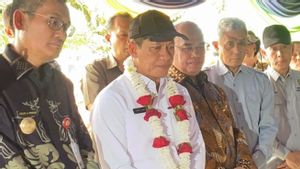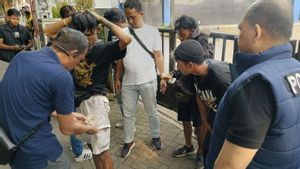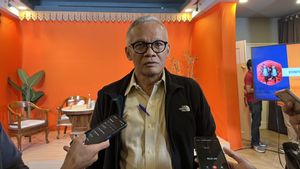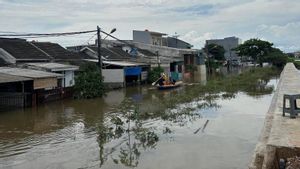JAKARTA - Traditional house is one form of cultural interpretation of the local area that is rich with uniqueness, history and philosophy. One of the traditional houses in Indonesia is the east Nusa Nenggara traditional house (NTT).
NTT is one of the provinces in Indonesia consisting of several islands. The province also has a lot of diversity. The diversity consists of tribes to traditional houses. Some of the tribes that we can find in East Nusa Tenggara are antoni, belu, lamaholot and others.
Each tribe has its own unique design and shape of a traditional house. One type of traditional house in NTT is divided into several parts of the house.
The style of the structure of this traditional house is also various and has its own characteristics. In fact, each structure of the house has a special function and meaning.
Traditional houses in the NTT area are usually in the form of stilt houses with rather square or rectangular structures. Unlike east Timorese traditional houses that have a round shape such as eggs and no poles.
Some traditional dwellings in this traditional house are basically distinguished in terms of the model or shape of the roof of the house, among others:
It has the shape of ajoglo roof, and is inhabited by sumba people. It has a roof shape with a round cone shape and becomes a traditional east Timorese house. It has a roof shape that mimics the shape of an overturned boat and becomes the traditional home of the Rote and Sabu tribes.Some of the traditional house dwellings still have similarities even though the shape of the roof is different. The similarity is found in the availability of a special place that is believed to be a holy place for the spirits of ancestors. At certain times, the special place is given offerings.
History of NTT traditional houseFrom its history, musalaki traditional house is believed to be the traditional house of ende Lio people. The naming of musalaki traditional house is derived from a word in Ende Lio language; Mosa.
Mosa means as "chairman", and Laki means "custom", so musalaki house is agreed as a house that serves as the main residence of the Chieftain of ende Lio tribe.
Types of NTT traditional housesAs one of the beautiful and interesting provinces in Indonesia, East Nusa Tenggara has several types of traditional houses that are rich in shape and aesthetics. The types of traditional houses include:
Musalaki traditional house

This traditional house is the most common traditional house you can find. Musalaki traditional house itself is one of the traditional houses agreed as a symbol of east Nusa Tenggara province. Musalaki traditional house has a unique architectural design and is divided into two main parts, including the upper structure and the lower structure.
Mbaru Niang traditional house

The next traditional house of East Nusa Tenggara is Mbaru Niang traditional house. This traditional house comes from a village located in East Nusa Tenggara, namely Wae Rebo village. Mbaru Niang traditional house was formed with a very unique design and different from the traditional house in general. If musalaki traditional house is reserved for tribal chiefs only, then this Mbaru Niang traditional house can be inhabited by the local community.
Mbaru Niang traditional house has a unique and interesting architectural design because it was established by forming like a cone and giving the impression of a very large tent. The height of this traditional house can reach about 15 meters.
Sao Ria Tenda Bwe Moni Koanara traditional house

The last traditional house of East Nusa Tenggara is the traditional house of Sao Ria Tenda Bewa Moni. This traditional house is also built with a very unique design and different from other East Nusa Tenggara traditional houses.
In terms of function, this traditional house is divided into several parts. Some use this traditional house as a place to live and there are also some people who function it as a place to store customary objects to the bones of the ancestors.
Ntt custom house function
NTT traditional house has various functions. The basic function is the same as the function of the house in general, which is a place to shelter and a place to live. As for the type of traditional house Musalaki has its own function, namely as a special residence for the chiefs of customs or tribal chiefs only.
Meanwhile, Mbaru Niang house has a function that can be seen from several levels in it. And these parts have different functions, including:
The first level is called the lutur which is used as a place to live and gather with family members. The second level is an attic or lobo that has a function to store groceries and daily items. The third level is called lentar, having the benefit of storing the seeds of food crops, such as corn seeds, rice, and legumes. The fourth level is called lempa rae, provided as food stock storage in case of drought. The fifth level is called the code hekang, which is made for the offering of offerings to the ancestors.Sao Ria Tenda Bewa Moni Koanara traditional house consists of three kinds that are adapted to its function, among others:
The first function as a standard house, which is used as a storage of ancestral bones. The second function is useful as a residence that is used for housing The third function is used as a rice barn container.The difference between the three places is the presence of buffalo heads placed in front of the traditional house of Sao Ria Tenda Bewa Moni Koanara.
Rumah Adat Nusa Tenggara Timur was founded by applying a philosophy, namely maintaining the balance between one human being and another human being, as well as between humans and the environment. In addition, NTT traditional house also has a philosophical function as the main place to keep hold of religious values, norms, aesthetics and culture.
Such is the explanation of ntt traditional house along with the history, types of houses, and also the functions given. Hopefully this paper further enriches the insight about the richness of culture in Indonesia.
Follow other domestic and foreign news only in VOI.id, It's Time to Revolutionize The News!
Other BERNAS
The English, Chinese, Japanese, Arabic, and French versions are automatically generated by the AI. So there may still be inaccuracies in translating, please always see Indonesian as our main language. (system supported by DigitalSiber.id)
